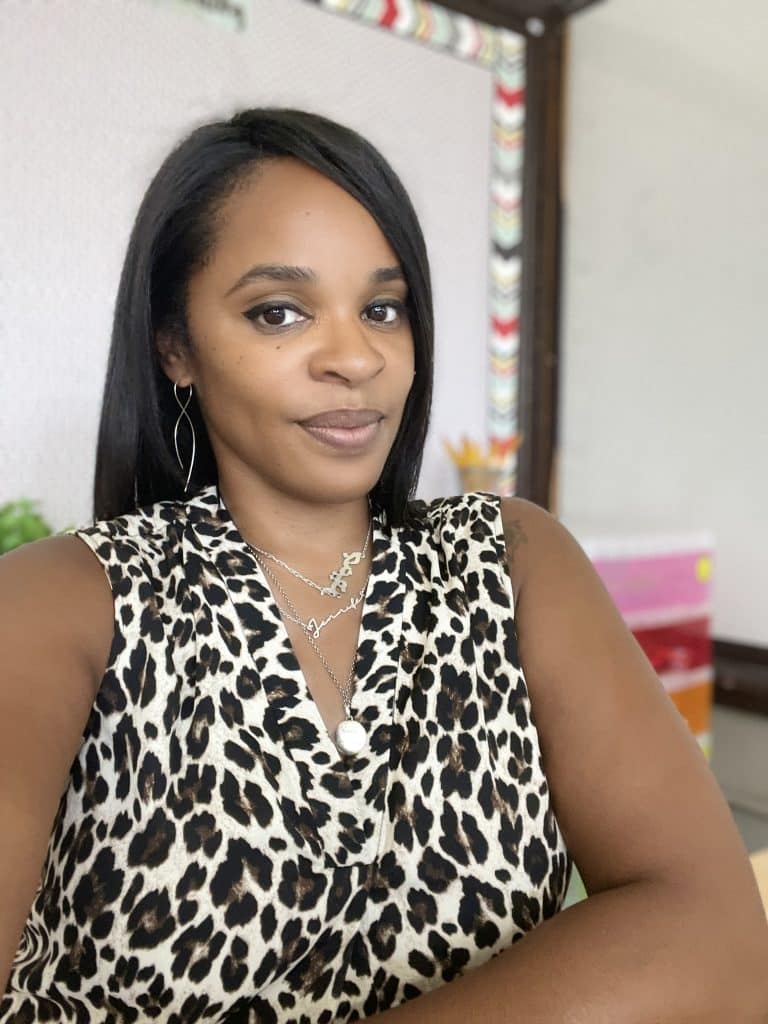Have you signed up for The Educator’s Room Daily Newsletter? Click here and support independent journalism!
Why I Asked the Question
School has already begun for many students across the country and will begin for many more in the next few weeks. Like most teachers, I spent the summer recuperating from and reflecting on the last school year. One incident that came to mind occurred while I was passing another class of students in the hallway. A Black boy told one of his classmates, “That’s not fair! Why do they get a Black teacher and we don’t?”
It led me to pose a simple question on Twitter to White teachers who work in majority Black and Latino schools: “Why are you there? Why not a majority White school?” I asked this question for a number of reasons, and many of the Black teachers I follow held their breaths, waiting for the responses. One even jokingly replied that I was looking to “tussle.” Part of me did, but an even larger part of me genuinely wanted to hear directly from White teachers why they chose to work at Black and Latino public schools.
According to Chicago Public Schools’ statistics, 82.5% of students attending Chicago Public Schools are Black and Latino. In comparison, over 50% of the teachers are White, with the number of Black and Latino teachers steadily declining. Redlining and segregation have created a public school system in which the majority of White students living in Chicago city limits attend private or parochial schools. With this context in mind, I asked White teachers about their decision to teach Black and Brown students.
White Teachers and Black Teachers Had Different Answers
The responses were staggering. I received hundreds of them. Some verged on White Saviorism™, while others offered a strange self-flagellation as if working with Black and Latino children was some sort of penance to correct the wrongs of white supremacy. Quite a few teachers discussed the bigotry of their colleagues and the entitlement of parents as the reason for not wanting to teach in White schools. Others named the sense of community they felt after being placed at their school upon completion of their teacher preparation programs. The replies from White teachers were varied.
The quote tweets from Black teachers and students – current and former – were a different story. The overwhelming consensus was that White teachers in Black and Latino schools simply could not get a job in a “better” school and were stuck; that they were getting their feet wet until they had enough experience to move to the suburbs; public schools paid more than private schools, or that they were there to get their student loans forgiven. The disconnect between how White teachers viewed themselves and how their Black and Latino colleagues and former students viewed them was incredible. So what’s really the truth, and why does this even matter?
Why a Teacher’s Race Matters
Why does this matter?
If you believe that race doesn’t matter, as a few respondents to my question proudly proclaimed, then you would be ignoring the hundreds of years of American history that have gotten us to this point. In addition you’re potentially ignoring the cultural differences among the students in your classes.
Representation matters. According to The Long-Run Impacts of Same-Race Teachers, a research study published by the National Bureau of Economic Research, using data from a class-size experiment, Black students who had at least one Black teacher during their primary education (kindergarten – 3rd grade) were 13% more likely to graduate from high school and 19% more likely to graduate from college than Black students at the same school who did not have a Black teacher. There was very little variance for White students – the race of their teachers had no significant impact on their post-secondary achievement.
Considering that nearly 80% of public school educators in the United States are White, it is neither feasible nor productive to assume that White teachers are incapable of providing high-quality, culturally-responsive instruction to all students, regardless of their race. Instead, what is feasible is a purposeful commitment to increasing the academic achievement of Black and Latino students, whether their teacher looks like them or not, and continuous reflection on that practice.
Language Matters: “They” versus “Our”
The majority of educators have in common our commitment to continuously improve our craft through professional development, coaching, and self-reflection. We are problem solvers, answer seekers, and decision-makers. We entered this profession to make a difference in the world – one child at a time. Our success at this task is inextricably linked to the success of each of our students. So how can White teachers positively impact the students who enter their classrooms?
Many of the educators who responded to me referred to their students and their families as “they” and “them.” In contrast, a few who offered reflective, student-centered purposes for teaching in Black and Latino schools used “my students” and “our families” in reference to their school communities. While the distinction may seem minor, there was a marked difference in how those educators described their roles as a stakeholder. The teachers who used “my” to refer to the students spoke mostly about the quality of the instruction they provide their students, their desire for equity in education, and the steps they take as educators to decrease achievement gaps.
According to the National Center for Education Statistics, 7% of public school teachers identify as Black or African-American, and 9% identify as Hispanic or Latino, despite Black and Latino students comprising 15% and 28% of the public school enrollment, respectively. When I look at my students, I see children who are a part of my community – children who look like my cousins, nieces, and nephews. Children who look like me. We are connected by race and culture, and that makes it easier to refer to them as “mine” and their families as “we.” Perhaps it’s subconscious tribalism that compels me to make this connection with my students, but with this connection comes a sense of duty to ensure that I am providing high-quality instruction and enriching experiences to my students. Teachers who do not have this innate bond through race and ethnicity should reflect on their practice by constantly asking themselves: How would my teaching practices differ if my students looked more like me – and being completely honest with the answer.
Finding and Building Communities of Acceptance
Another frequent response from White teachers was how they felt accepted into Black and Latino school communities. They told stories of being welcomed with open arms, being treated like family… and not a single White person talked about giving acceptance in return. No one mentioned inviting their Black teammate to be in their wedding despite crying on their shoulder every prep period for four years. No fun stories about how they invited their Puerto Rican colleague to their family’s second home in Michigan after spending a week in Rincon at their colleague’s family’s only home.
The educators who responded about their acceptance in Black and Latino schools also gave accounts about the lack of reception while working at White schools. For example, one respondent spoke of the differences between White schools’ rigid focus on academics and Black schools’ focus on community and relationships. I wondered how that affected the way they taught their students. While they clarified that they meant the focus in White schools was only on academics and not community, it concerned me that more than one White teacher believed Black schools to be less rigid. This does not fit with the reality that Black students are punished with out-of-school suspensions at a disproportionate rate compared to students of every ethnicity – over four times the rate of White students. Another educator reflected on the culture and climate at the majority White school where she attended and taught before joining the faculty at a more diverse school. She was uncomfortable with the bigotry she witnessed. However, when I asked about trying to change the culture from the inside, her response led me to believe that the task of combatting biases was insurmountable.
What can White teachers do to ensure that they are fostering an environment in which they are offering acceptance and understanding to their Black and Latino colleagues and students instead of only benefiting from the community and relationships into which they have been welcomed? How might they navigate the privilege of acceptance in Black and Latino spaces when it isn’t always afforded to them in their own communities nor afforded to the individuals whose communities they enter? I hope that White teachers examine their contributions to their school communities outside of delivering instruction and reflect on their relationships with their Black and Latino colleagues.
An Opportunity for White Teachers to Reflect
The intent behind my question was to create an open space of honesty and understanding. I wanted to understand how White teachers viewed themselves and the role they play in the lives of Black and Latino students. I know what compels me to work with students who look like me, and I was curious to hear from teachers who do not look like their students or share their culture and experiences. I initially had mixed feelings after reading through many of the responses, but I’ve come to the realization that the question and responses weren’t for me. It was an opportunity for White teachers to reflect on their purpose, share ideas with other teachers, and have a genuine conversation about what can be done to ensure they are giving their students the education they deserve.
I can only speak from the perspective of a Black teacher who was once a Black student. I don’t want to put words into the mouths of my fellow Latino educators or any other person of color. But I believe the conversation is important and needs to happen. My hope is that those who participated in the conversation reflect on the responses. In addition, I hope they will also read some of the texts suggested by other educators and communicate with Black and Latino stakeholders in their school communities. Perhaps then they can close the gap between how they see their purpose and the true impact of their work in Black and Latino communities.

Jennifer Fletcher was born and raised in Chicago and attended various Chicago Public Schools including Whitney M. Young Magnet High School – one of the top ranking public high schools in the country. She earned a degree in Elementary Education from National-Louis University in 2005 and began teaching the same year in the Chicago Public School system. In 2011, she took a break from education and after earning a Masters in Human Resources and Development, worked in corporate recruiting. Since 2015, Jennifer has been teaching primary and intermediate students on Chicago’s south and west sides and will soon begin a new role as a special education teacher. She has one teenage child and two cats, Puddles Cuddles and Hallow Eve.
Editor’s Note: If you enjoyed this article, please become a Patreon supporter by clicking here.






